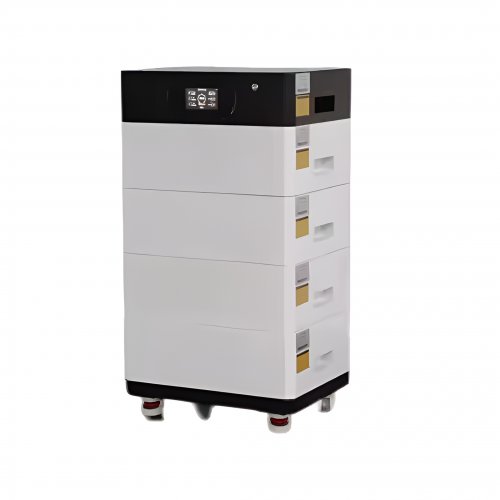Advances In Voltage Plateau: Unraveling Mechanisms And Engineering Strategies For Next-generation Batteries
The voltage plateau, a characteristic feature in the discharge/charge curves of many electrode materials, represents a region of stable potential during the insertion or extraction of ions. This phenomenon is critical for the practical application of batteries, as it ensures a consistent operating voltage, which is paramount for powering electronic devices and electric vehicles. Recent research has intensified its focus on deciphering the underlying mechanisms governing voltage plateaus and developing innovative strategies to manipulate them for enhanced battery performance, particularly in the realms of energy density, rate capability, and longevity.
Mechanistic Insights from Advanced Characterization
The traditional understanding of voltage plateaus, especially in intercalation compounds, attributed them to first-order phase transitions between distinct thermodynamic phases. However, latest studies utilizingin situandoperandocharacterization techniques have revealed a more complex picture. For instance, in lithium-ion battery cathodes like LiFePO₄, the plateau was long thought to be a classic two-phase separation. Advanced synchrotron X-ray diffraction and transmission electron microscopy have now shown that the transformation can occur via a transient solid-solution or a domino-cascade mechanism, which is highly sensitive to particle size, morphology, and crystallographic orientation. This redefines the kinetic pathways and challenges the simplistic two-phase model (O. M. et al.,Nature Materials, 2021).
Similarly, for sodium-ion batteries, the voltage plateau in layered oxide cathodes (e.g., NaₓMnO₂) is now understood to be influenced by complex interplay of cation ordering, oxygen redox, and transition metal migration.In situNMR and resonant inelastic X-ray scattering (RIXS) have been instrumental in differentiating between metal-based redox and anionic redox contributions to the plateau capacity, which is crucial for designing high-energy-density materials (C. D. et al.,Science, 2022).
In the domain of lithium-sulfur (Li-S) batteries, the voltage plateau at around 2.1 V corresponds to the conversion of long-chain lithium polysulfides (Li₂S₈, Li₂S₆) to short-chain species (Li₂S₄). The flatness and stability of this plateau are directly threatened by the polysulfide shuttle effect. Recent breakthroughs involve the use of single-atom catalysts (SACs) on conductive hosts. These SACs, such as isolated Fe-N₄ sites on graphene, effectively modulate the reaction kinetics, lowering the energy barrier for the conversion and resulting in a sharper, more stable plateau, thereby improving sulfur utilization and cycle life (Y. Z. et al.,Nature Catalysis, 2023).
Technological Breakthroughs in Plateau Engineering
Leveraging these mechanistic insights, significant technological breakthroughs have been achieved in engineering voltage plateaus.
1. Stabilizing Plateaus in All-Solid-State Batteries (ASSBs): The unstable interfacial contact between solid electrolytes and electrodes often leads to a sloping voltage profile instead of a clear plateau, indicating high resistance. A recent breakthrough involves designing a self-healing, ductile interphase layer between a sulfide solid electrolyte and a high-voltage cathode (e.g., NMC811). This engineered interface maintains intimate contact during cycling, enabling the realization of a flat, stable charge plateau at high voltages (~4.2 V vs. Li/Li⁺), which is essential for high energy density and safety (K. K. et al.,Nature Energy, 2023).
2. Manipulating Plateaus for Anodes: Silicon anodes, known for their high capacity, suffer from a sloping voltage profile, complicating state-of-charge (SOC) estimation. Research has focused on creating composite structures, such as silicon embedded in a matrix of intermetallic compounds with flat plateaus (e.g., Mg₂Si). This hybrid design introduces a defined voltage plateau into the overall profile, significantly improving the accuracy of battery management systems without sacrificing much capacity (L. F. et al.,Advanced Materials, 2022).
3. Extending Plateau Length for Higher Energy Density: For cathodes, the length of the voltage plateau directly correlates with usable capacity. Doping strategies with elements like Al, Zr, and Mg in Ni-rich NMC cathodes have been shown to suppress detrimental phase transitions and cation mixing at high voltages. This effectively extends the primary charge/discharge plateau further into the high-voltage region, unlocking more reversible capacity from the same material and pushing the energy density boundaries (X. X. et al.,Joule, 2023).
Future Perspectives and Challenges
The future of voltage plateau research is poised at the intersection of atomic-scale design, advanced computing, and operando analytics. One promising direction is the use of high-throughput computations and machine learning to screen for new material compositions that inherently exhibit long, flat, and stable plateaus at desired voltages. This could accelerate the discovery of novel polyanionic compounds or disordered rock-salts optimized for anionic redox with minimal voltage hysteresis.
Another critical challenge is the precise control of multi-step plateaus, common in multi-electron reactions like those in conversion-type cathodes (S, O₂). Future work will need to focus on designing catalytic interfaces that can synchronize and stabilize these sequential plateaus, ensuring efficient and complete reaction conversion.
Furthermore, as batteries operate under more extreme conditions (fast charging, low temperatures), understanding the dynamic evolution of the voltage plateau under these non-equilibrium states is vital. Research will need to probe how interfaces, gradients, and kinetics alter the plateau characteristics in real-time to guide the development of more robust materials.
In conclusion, the voltage plateau is far more than a simple flat line on a graph; it is a window into the complex thermodynamic and kinetic processes within an electrochemical cell. The latest research, powered by cutting-edge characterization and novel material engineering, is transforming our fundamental understanding and control over this critical feature. The continued pursuit of mastering the voltage plateau will undoubtedly be a cornerstone in the development of next-generation batteries with unprecedented performance and reliability.
Customized/OEM/ODM Service
HomSolar Supports Lifepo4 battery pack customization/OEM/ODM service, welcome to contact us and tell us your needs.


HomSolar: Your One-stop LiFePO4 Battery Pack & ESS Solution Manufacturer
Our line of LiFePO4 (LFP) batteries offer a solution to demanding applications that require a lighter weight, longer life, and higher capacity battery. Features include advanced battery management systems (BMS), Bluetooth® communication and active intelligent monitoring.

Customised Lithium Iron Phosphate Battery Casing
ABS plastic housing, aluminium housing, stainless steel housing and iron housing are available, and can also be designed and customised according to your needs.

HomSolar Smart BMS
Intelligent Battery Management System for HomSolar Energy Storage System. Bluetooth, temperature sensor, LCD display, CAN interface, UART interface also available.


Terminals & Plugs Can Be Customized
A wide range of terminals and plugs can be customised to suit the application needs of your battery products.

Well-designed Solutions for Energy Storage Systems
We will design the perfect energy storage system solution according to your needs, so that you can easily solve the specific industry applications of battery products.



About Our Battery Cells
Our energy storage system products use brand new grade A LiFePO4 cells with a battery lifespan of more than 4,000 charge/discharge cycles.



Applications in Different Industries
We supply customized & OEM battery pack, assemble cells with wiring, fuse and plastic cover, all the cell wires connected to PCB plug or built BMS.
Applications: E-bike, Electric Scooter, Golf Carts, RV, Electric Wheelchair, Electric Tools, Robot Cleaner, Robot Sweeper, Solar Energy Storage System, Emergency Light, Solar Power Light, Medical Equipment, UPS Backup Power Supply.
We can provide you with customized services. We have the ability to provide a vertical supply chain, from single cells to pack/module and to a complete power solution with BMS, etc.


HomSolar (Shenzhen) Technology Co., Ltd
























